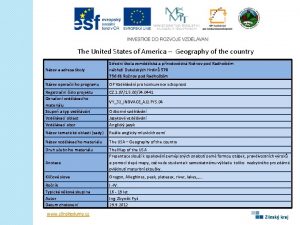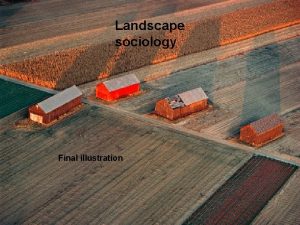Physical landscapes in the UK Coastal Landscapes KO

- Slides: 1

Physical landscapes in the UK: Coastal Landscapes - KO Paper 1: Question 3 Terms The wearing away of material at the coast. Hard engineering Man-made structures to protect the coast from erosion. Managed retreat Allowing cliff erosion to occur as nature taking its course. Mass movement The downhill movement of weathered material under the force of gravity. Soft engineering Managing erosion using natural processes. Transportation The movement of material at the coast. Weathering The process by which rocks are broken down by weather and plants. Key content Processes Waves Ripples in the sea caused by the transfer of energy from the wind blowing over the surface of the sea. The largest waves are formed when winds are very strong, blow for lengthy periods and cross large expanses of water Weathering Chemical - The decomposition (or rotting) of rock caused by a chemical change within that rock. Mechanical - Weathering processes that cause physical disintegration or break up of exposed e. g. freeze thaw. Mass movement Sliding – material shifts in a straight line. Slumping – material shifts with a rotation. Rockfall – material breaks up and falls down the slope. Erosion Transportation Deposition By abrasion, hydraulic action and attrition. By longshore drift - The zigzag movement of sediment along a shore caused by waves going up the beach at an oblique angle(swash) and returning at right angles(backwash). Occurs when material being transported by the sea is dropped due to the sea losing energy Coastal landforms erosion Erosion Coastal landforms - deposition The laying down of material at the coast. Headlands Where more resistant rock (e. g. chalk) juts out into the sea. Bays Where less resistant rock (e. g. clay) is eroded backwards quickly. Wave-cut platforms A rocky, level shelf at or around sea level representing the base of old, retreated cliffs. Caves, arches, stacks and stumps The process by which a headland is eroded and subsequently collapses into the sea. Beaches The zone of deposited material that extends from the low water line to the limit of storm waves. The beach or shore can be divided in the foreshore and the backshore. Sand dunes Coastal sand hill above the high tide mark, shaped by wind action, covered with grasses and shrubs. Spits A depositional landformed when a finger of sediment extends from the shore out to sea, often at a river mouth. It usually has a curved end because of opposing winds and currents. Bar Where a spit grows across a bay, a bar can eventually enclose the bay to create a lagoon. Bars can also form offshore due to the action of breaking waves. South Devon – coastal landforms Coastal management Deposition Key content Burgh Island (Tombolo), Start Point (Headland), Slapton Sands (Bar), Berry Head (Headland), Torbay (Bay), Dawlish Warren (Spit) Hard engineering e. g. Sea wall, gabions, rock armour and Groynes. Soft engineering e. g. Beach nourishment and profiling, dune regeneration. Managed retreat Taking the decision not to protect the coastline by removing current defences and allowing flooding and erosion. Holderness coast management North-east coast UK, fastest eroding coastline in Europe. Mappleton – Rock armour and groynes; cost £ 2 million. Hornsea – Sea wall and groynes. Withernsea – sea wall, groynes and rock armour.

